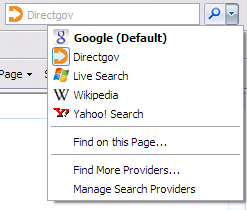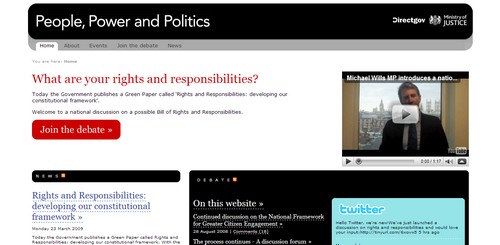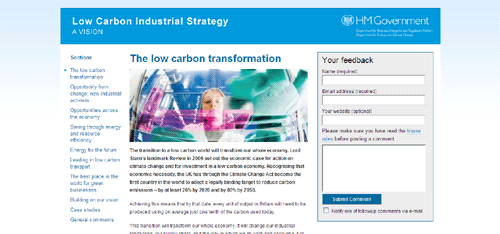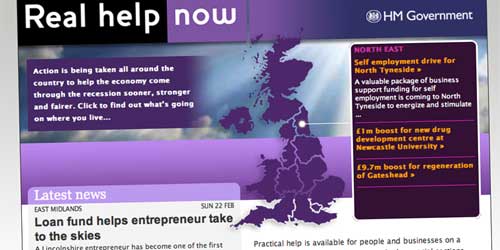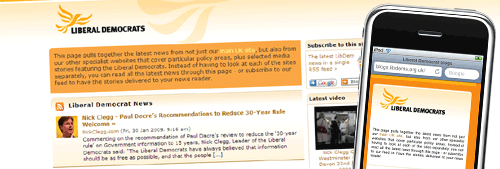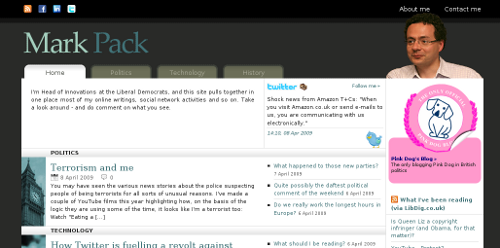
A while back, I did a very quick job for the Liberal Democrats, working with their (now outgoing) Head of Innovations, Mark Pack. So I considered it a real honour when Mark then asked me to help him put together his own personal site: and markpack.org.uk went live this week.
It wasn’t a straightforward ‘web design’ project: frankly, that would have made things quite a bit easier. Instead, it was primarily about aggregating Mark’s contributions to other websites. Most of his writing appears at Liberal Democrat Voice, the independent site for party activists; he also writes regularly for Wardman Wire, Iain Dale’s Total Politics, and the long-established liberal magazine Liberator. This has given him a very high profile, not just among the LibDem community, but in the wider field of online political activity. But unlike most other people with similar name recognition, there wasn’t any one place where you could find out who he was – which might explain the rather curious characterisation of him by some as an ‘attack dog‘!
For the most part then, it’s a WordPress site being fed by other WordPress sites. We’re taking the ‘author feeds’ from LDV and Wardman, importing them automatically using the FeedWordPress plugin, and categorising them appropriately as they come in. Other stuff will be added manually: some items written for print, some written solely for the site. And that’s not to mention the Twitter feed, or Mark’s read items from the LibDig site, or his cuddly pink alter ego, or…
That’s a lot of disparate material to pull together, but I’m really pleased with the results – particularly the presentation of the individual items. Even though very little has been written with this site in mind, the site hangs together pretty well as an entity in itself, and the templates have (so far?!) been able to handle everything thrown into them.
It’s been tricky to build a site which doesn’t ‘own’ most of its own content… but it’s been great fun to work with someone who knows the business so well. We’ve been able to bounce ideas off each other throughout the development process, often challenging me in ways most clients aren’t able to do. And I’m very comfortable leaving Mark with the ability to customise the site going forward with plugins, widgets and so on. As a quick skim of his writing will reveal, he knows what he’s doing.

